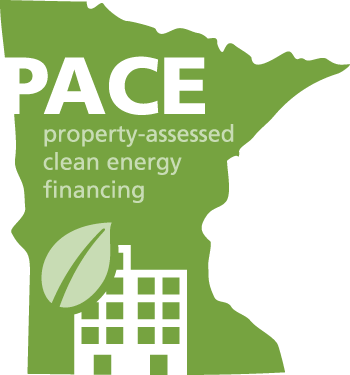Property Assessed Clean Energy (PACE) is a new way to finance energy efficiency and renewable energy upgrades to the buildings of commercial property owners in cities and counties that allow it.
Energy-saving measures pursued by the owners receive project financing and are repaid as a separate item on their property tax assessment for a set period. PACE eliminates the burden of upfront costs by providing low-cost, long-term financing.
We spoke with Richard Otten, a Certified Energy Manager (CEM), to learn more about the energy audits of businesses he provides, some of which are done for the Rural Minnesota Energy Board (RMEB) commercial PACE program.
CERTs: Tell us a little bit about yourself and your business.
 Richard Otten: My name is Richard Otten. I have been a CEM (Certified Energy Manager) since 2011. The Association of Energy Engineers provides this certification. I am also a Certified Energy Auditor, which is more specific to the energy auditing profession. My business is Richard Otten Inspections, specializing in energy consulting for small to medium sized commercial businesses. I have nearly 25 years experience in energy auditing and conservation. I prefer to be considered an “Energy Coach” because energy efficiency is a continuous process.
Richard Otten: My name is Richard Otten. I have been a CEM (Certified Energy Manager) since 2011. The Association of Energy Engineers provides this certification. I am also a Certified Energy Auditor, which is more specific to the energy auditing profession. My business is Richard Otten Inspections, specializing in energy consulting for small to medium sized commercial businesses. I have nearly 25 years experience in energy auditing and conservation. I prefer to be considered an “Energy Coach” because energy efficiency is a continuous process.
CERTs: Who are some of the clients you typically work with?
Richard Otten: I have worked with many different businesses. Nursing homes, multi-family apartment buildings, office buildings, restaurants, private schools, manufacturing facilities, feed mills, hog confinements, grain elevators, food processing plants, and many others.
CERTs: What kinds of savings do you see in your line of work?
Richard Otten: Energy savings is based upon many different factors such as size of operation, age of equipment, hours of operation, utility rate structure, employee habits, and several other variations. Savings are calculated on a case-by-case basis and can vary from 10% to 70% but typically are around an average of 30% to 40% on specific energy conservation measures.
CERTs: What are some of the technology upgrades or conservation practices that you find which are often overlooked by your clients?
Richard Otten: The owners most often must be willing to make capital investments to upgrade to the new technologies that were not available to them 5 to 10 years ago. Technologies such as LED lighting, condensing boilers, digital controls, variable-frequency drive motors, web and router based system monitoring solar PV—and the list continues to grow. These upgrades are, in my opinion, an essential component in the strategy for businesses to stay competitive.
CERTs: What do you say to businesses who consider energy to be a “fixed cost?”
Richard Otten: I tell my clients that energy bills should not be considered as fixed overhead costs but should be considered as an expense that can be reduced with comprehensive planning. It typically takes a team to achieve the best results. Starting with the CEO, to the supervisor, to the production worker, all the players in the game are essential to the overall success within the business environment.
CERTs: How can we learn more about the projects you’ve done for the RMEB PACE program?
Richard Otten: You can see stories about two of the PACE projects I did audits for that are now completed: Blue Line Travel Center and Parkwood Place Apartments.
CERTs: Any last thoughts you want to share?
Richard Otten: The future is bright and exciting for energy efficiency. We need more energy auditors (energy coaches), we need installers of these new technologies, we need computer programmers to monitor and control onsite systems, we need technicians to troubleshoot and repair systems. We need education systems to support all of the above. The future is exciting!
Learn more about PACE to see if it could work for your business >>



